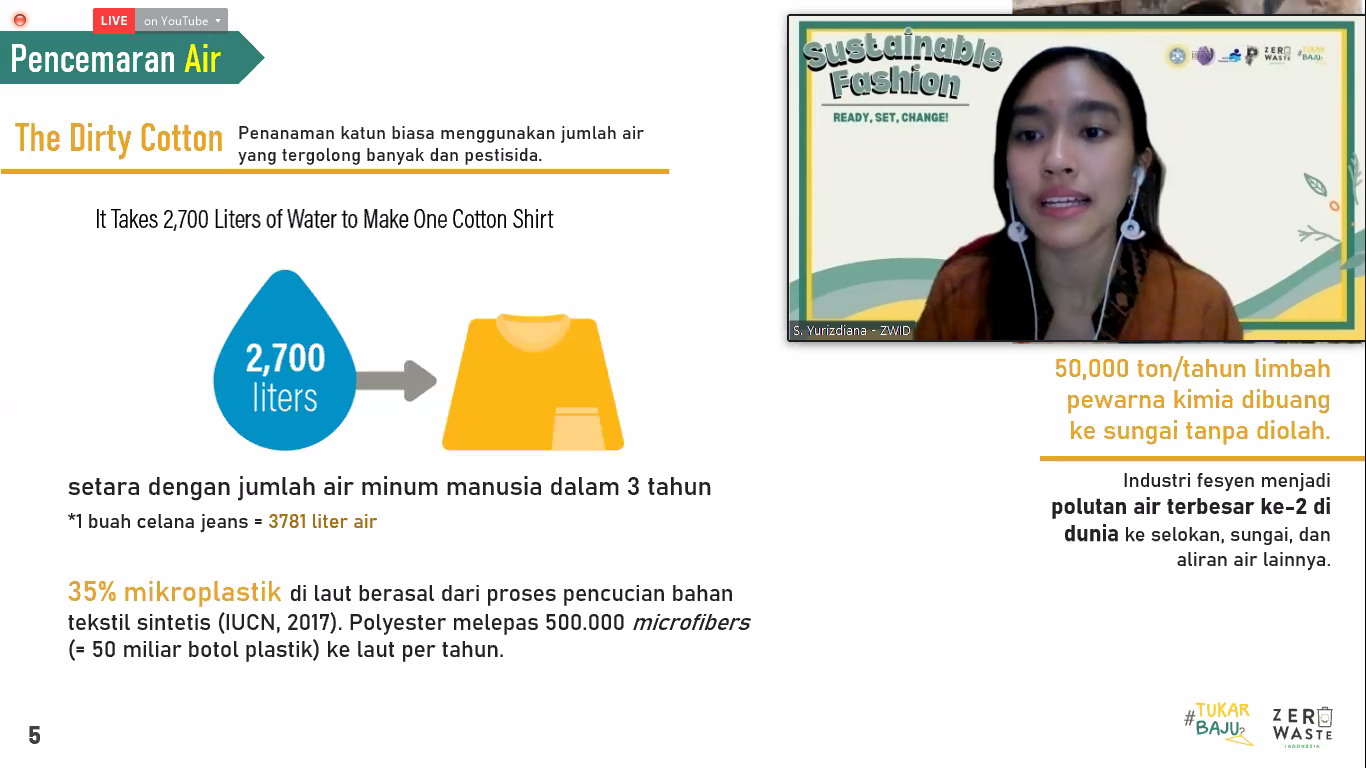UNAIR NEWS – The textile industry is a supplier of the clothing needs of current modern society. As one of the industries that provide the basic needs of society, the textile industry is required to always meet the demand for textile products following the tastes and trends in the market.
One of the reasons for the rapid change in the textile industry trends is the high amount of waste generated by this industry. This waste can come from the clothing production process or old clothing disposed of at the Final Disposal Site (TPA).
“Global data shows that as much as 92 tons per year of textile waste is generated. This amount is equivalent to one garbage truck that comes to the TPA every second,” said Syarifa Yurizdiana, an activist for Zero Waste Indonesia, at the webinar held by the Department of Community Service, Student Executive Board Student Family (BEM KM) Faculty of Psychology Universitas Airlangga (FPsi UNAIR).
Diana also explained that on global average, women use one of their clothes seven times. “If that’s the case, is it really the fault of the producers (marketing) or is it us who unconsciously turn out to be dissatisfied, so we keep buying clothes?” said Diana.
According to Diana, there are several ways to reduce textile waste in the environment. One of them is to apply the concept of sustainable fashion.
“The goal is to prosper and provide minimal losses both for the consumer and producer. And this is of course not only for our environment but also for all parties in it,” explained Diana.
According to Diana, there are several tips for practicing a sustainable fashion lifestyle. Check out the explanation below to find out further how to apply it.
- Wear any clothes we have
The simplest and most important way in this sustainable fashion lifestyle is to wear whatever clothes we have as long as they are still wearable.
“Is there an outfit you haven’t worn in a long time? Especially because of the pandemic, it rarely comes out,” Diana added.
- Borrow clothes
“The next thing we can do to meet our needs (to dress) is when we need a new product, we can actually borrow it. It is a concept we have to normalize,” Diana continued. According to her, borrowing clothes can be a solution to reduce the need to buy new clothes.
- Exchange clothes
Diana argued that exchanging clothes can also reduce the need to buy new clothes. “We exchange clothes with anyone, maybe with a brother, close friend, neighbor, or anyone else. We can also do it with strangers to build mutualism,” said Diana.
- Wear thrift clothes
“This is actually exchanging clothes for money. But the sold clothes are the ones that have been worn before,” said Diana. Considering that the price of second-hand clothes is cheaper, Diana reminded us to keep our needs in mind.
“Let’s take a look at our needs again. Do we really need these clothes, or do we just want them because they are cheap? As consumers, we should try to remain conscious,” said Diana.
- Make your own clothes
According to Diana, there are many advantages to making your own clothes. “We can choose the material first, where to buy the material, what kind of model we want, and the size to adjust. Moreover, we can empower the people closest to us: the fabric sellers and tailors around us,” said Diana.
The webinar by BEM KM FPsi UNAIR is entitled Sustainable Fashion: Ready, Set, Change!. The event was held online on Saturday, August 14, 2021. (*)
Author: Agnes Ikandani
Editor: Binti Q. Masruroh (YA/AP)





